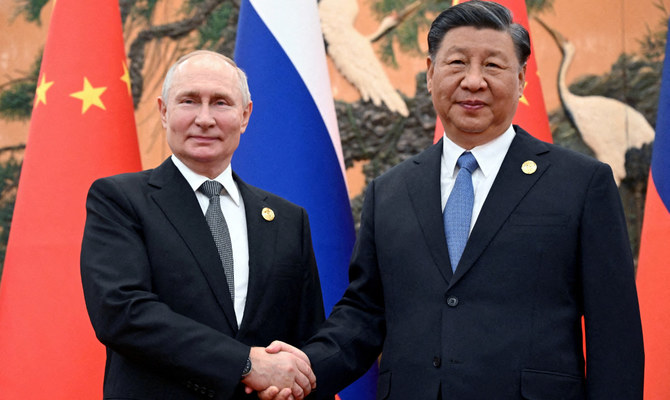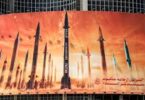Dr. Diana Galeeva
This week, Chinese President Xi Jinping met Russian President Vladimir Putin during the Third Belt and Road Forum for International Cooperation. Xi said the two leaders had met “42 times in the past 10 years” and “developed a good working relationship and a deep friendship.”
The latest meeting represented a continuation of the “no-limits” partnership between the countries that was launched in February 2022 with proclamations of “no limits to Sino-Russian cooperation… no forbidden zones.”
If we analyze recent talks and priorities, what are the key elements and drivers of the bilateral relations and what provisional conclusions can we reach about the evolution of this “no-limits” partnership, almost 18 months after it began?
The participation of the Russian leader at this week’s forum indicates Moscow’s strong support for cooperation in the Belt and Road Initiative infrastructure-development project, while for China it marks the evolution of Russia as a key partner for international cooperation.
This “deep friendship” has been developed over many years, with its legal basis established in the Treaty on Good Neighborliness, Friendship and Cooperation. It was signed in 2001 and remains the key basis for Russia-China trade and economic collaboration.
News service Russia Briefing cites China’s General Administration of Customs as stating that trade turnover between the countries reached a record level of $190.27 billion in 2022, an increase of 29.3 percent. Meanwhile, Reuters reported that Chinese customs data showed that in August this year, the value of Chinese imports of Russian goods increased by 3 percent to $11.5 billion, reversing a decline of 8 percent in July. This demonstrates the positive dynamics of economic collaborations.
As for investments, according to the Russian Ministry of Economic Development, as of September this year China and Russia were working together on 79 large-scale projects worth a total $170 billion.
Russia also occupies a key position in the Chinese oil market. Russian Deputy Prime Minister Alexander Novak said during the fifth Russian-Chinese Energy Business Forum at the end of 2022, that Russia had supplied more than 15 billion cubic meters of gas through the Power of Siberia gas pipeline. This year Russia expects supply volume to reach 22 billion cubic meters.
“We plan to bring the Power of Siberia gas pipeline to its design capacity of 38 billion cubic meters by 2025,” Novak said, demonstrating the crucial role energy plays in the “no-limits” partnership.
In another example of the ongoing engagements and real progress in cooperation in the energy sector, Russia’s United Oil- and Gas-Chemical Co. and China’s Xuan Yuan Industrial Development last week agreed to build a transhipment oil complex near a railway bridge connecting the Russian town of Nizhneleninskoye with Tongjiang in China.
This reflects the hopes of the Chinese for the further development of the China-Mongolia-Russia natural gas pipeline, along with the successful Great Tea Way cross-border tourism collaboration, and the China-Mongolia-Russia economic corridor as a road toward high-quality interconnected development. Although these are distinct projects, taken together they reflect the interconnected and practical dimensions of the “no-limits” partnership on a bilateral level.
There have also been broader results of the partnership at the international level. As noted by Xi, the recently announced historic expansion of the membership of BRICS — a grouping of the emerging economies of Brazil, Russia, India, China and South Africa, in which both countries play a vital role — demonstrates the growing confidence of developing countries in pursuing a multipolar world. This is a vision of which Russia, in particular, is a strong proponent.
China is also supporting Russia as the latter prepares to host the BRICS Summit in Kazan next year. Further, Beijing has expressed readiness to work with Moscow within the UN, the Shanghai Cooperation Organization, the G20 and other multilateral frameworks to address nontraditional security threats such as food security, energy security, the stability of global industry and supply chains.
This, of course, comes at a time when Russia’s presence on the world stage is beset by tensions over the war in Ukraine, and relations between China and the US in the South Pacific are uncertain at best.
The collaborations are having concrete outcomes, too. Russia and China recently signed a contract for the supply of grain worth about $25.7 billion, for example. According to the leader of the New Land Grain Corridor Initiative, Karen Hovsepyan, the deal involves the supply of 70 million tons of grain, legumes and oilseed over a period of 12 years. He noted that the initiative will contribute to the normalization of export structures within the framework of the Belt and Road Initiative. This might serve as another indicator of how essential the “no-limits” partnership is for both parties in terms of providing export and import opportunities.
Finally, the relationship affects the response of both countries to political developments including, most pressingly, the current situation in the Middle East. Both countries have hardened their positions on Gaza as the Israel-Hamas conflict results in wider geopolitical strains.
For example, the Chinese foreign minister said last weekend that Israel’s bombing campaign had gone “beyond the scope of self-defense” and that it “should stop collective punishment of the people of Gaza.” Meanwhile, Putin expressed concern that an intensified siege of Gaza by Israel might resemble the encircling of Leningrad by German troops during the Second World War. China has historically backed the Palestinian cause, as did the Soviet Union during the Cold War.
Meanwhile, US President Joe Biden made a dramatic wartime visit to Israel, and his country was the sole vote against a UN Security Council resolution that called for a pause in hostilities to allow humanitarian access to Gaza.
This sharp distinction reflects the push by Russia and China toward multipolarity, facilitated by their “no-limits” partnership. While Western states generally show their support for Israel, clear backing of the Palestinians is both rhetorically powerful and an indicator of potential future alignments over international conflicts.
Summing up, it might be too early to evaluate the results of the declared “no-limits” partnership, since it is not only relatively recent in its conception but was launched at a time of geopolitical tumult. However, there are some clear dynamics emerging on the bilateral and international levels. At the bilateral level, the partnership primarily relies on economic interests and infrastructure cooperation.
Internationally, the partnership promotes and allows for the alignment of objectives within multilateral frameworks, with the two countries broadly adopting similar stances on international events, conflicts and other developments.
Many issues remain to be negotiated, though. Vital differences remain within the domestic discourses in Russia and China about collaborations in Eurasian connectivity, China’s stake in the Arctic region, and its contrasting perspectives on the historical importance of Russia’s Far East.
Despite these complexities, however, both countries consider the “no-limits” partnership a win-win move within the current geopolitical context, both in terms of what it projects and in its realization. They will most probably seek further integration and cooperation in future, given that so far it has been proven to bring many benefits on the bilateral and international levels.







